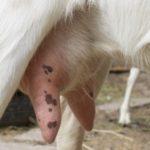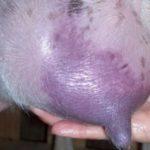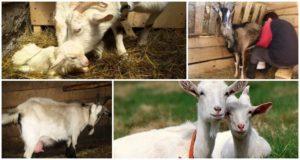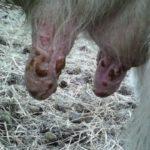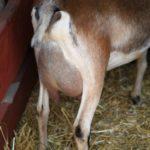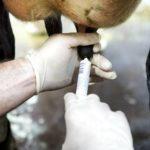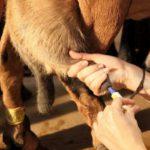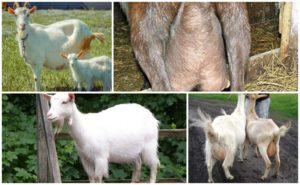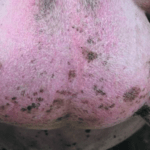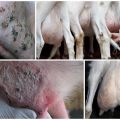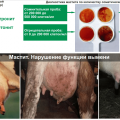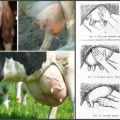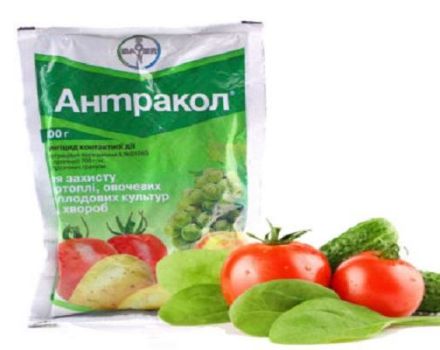How and how to treat mastitis in goats at home
Inflammation of the mammary gland in goats is called mastitis. The spread of the disease in the herd causes a decrease in milk yield. Mastitis occurs as a result of contracting a bacterial infection that is transmitted to healthy animals and humans. The disease is successfully treated with antibiotics, and preventive measures and compliance with the rules of maintenance will help to avoid re-infection.
Description of the disease
Mastitis, or breastfeeding, occurs in primiparous goats within 24 hours or 30-45 days after lambing. The disease is unilateral and covers one lobe of the udder, or bilateral, covering both lobes. Under the influence of a bacterial infection, edema occurs in the tissues of the udder, blood circulation is disturbed. The consistency and taste of the milk also changes. It becomes bitter, sour, transparent.
There are types of mastitis:
- purulent - an acute form of bacterial infection, accompanied by purulent discharge from the nipples, inflammation on the skin of the udder;
- serous - the accumulation of fluid in the tissues;
- catarrhal - inflammation manifests itself in the form of painful redness of the udder;
- hemorrhagic - leads to blood stagnation and bruising.
The disease is chronic and acute. In a chronic course, external signs do not always appear. In acute mastitis, the udder looks bloated, heavy, and the affected lobe or nipples darken.
Pathogens and causes of appearance
The main reason for the development of mastitis is the penetration of bacteria into the breast tissue. The methods of infection differ: through dirty hands and bedding, open wounds, or as a result of thermal exposure. Diseases and vitamin deficiency reduce the immunity of goats.
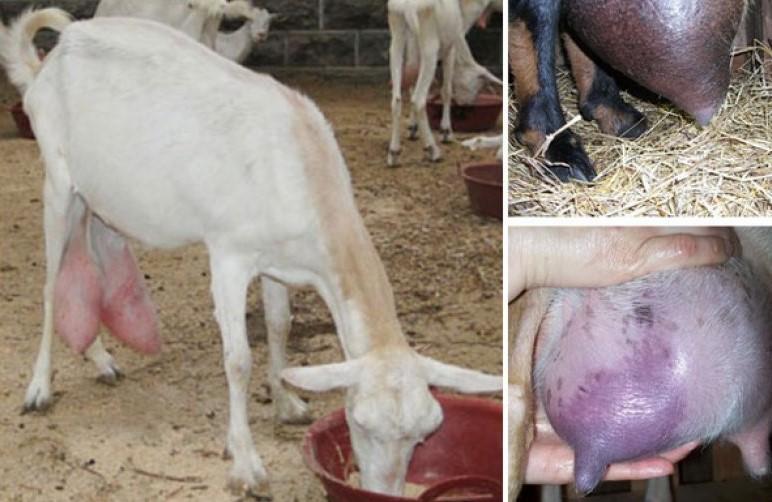
Biological
The causative agents of mastitis are Staphylococcus and Streptococcus bacteria. Disease-causing microorganisms enter the udder from the soiled bedding and dirty hands.
The causes of biological mastitis:
- rare cleaning in the barn, accumulation of excrement on the floor;
- dirty udder of a goat after milking;
- chronic diseases in an animal;
- lack of vitamins in the diet;
- irregular meals.
Also, mastitis is transmitted from a sick animal to a healthy one.
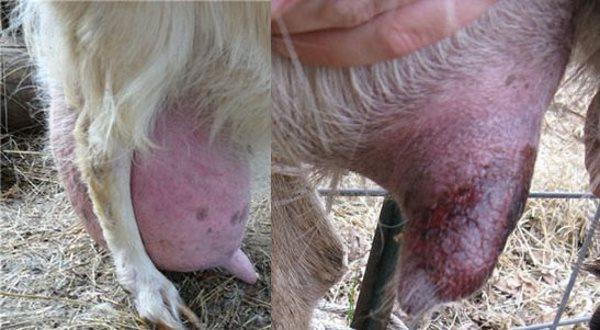
Mechanical
Mastitis develops as a result of damage to the skin of the nipples: scratches, bruises. Goats step on their own udders if they are bulky, or hurt them in a fight. Bacteria enter the wounds and cause inflammation.
The udder is injured in the following cases:
- during milking in violation of the technique - with pulling the nipples with two fingers, strong pinching of the tips;
- during independent walks of the animal - goats jump on the roofs of outbuildings, fences and cling to the udder.
Also, the cause of mechanical mastitis is the accumulation of milk in the udder. To avoid stagnation, massage is done before and after milking. Milking without udder preparation does not completely pump out the milk.
Thermal
Thermal reasons include:
- overheating - the animal gets burned if it lies in the sun for a long time;
- hypothermia - due to being in a draft, contact of the udder with cold ground, floor, damp litter.
Cold and heat reduce the defenses of the animal's body, and an inflammatory process begins in the damaged tissues.
Signs and symptoms of the disease
Early mastitis is manifested by the following symptoms:
- redness of the udder lobe;
- hardening of the gland;
- temperature increase.
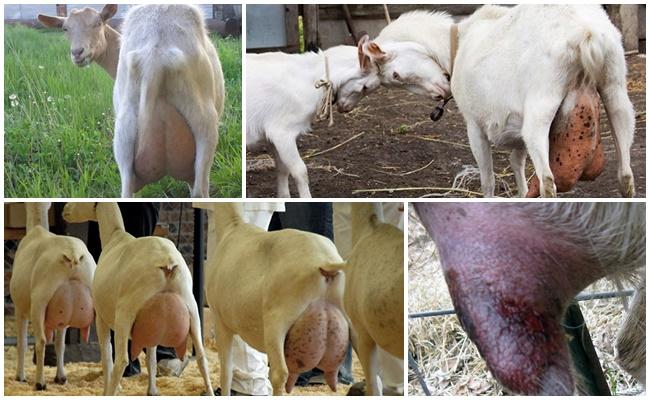
Symptoms of progressive mastitis:
- the seal in the mammary gland increases rapidly;
- the amount of milk decreases;
- the temperature rises;
- lymph nodes increase.
Mastitis in a lactating goat is also recognized by a decrease in milk quality. Signs of a breast-fed goat product:
- pink tint due to ichor;
- mucous clots;
- turbidity;
- translucency;
- bitter taste;
- the appearance of flakes and blood clots in the sediment;
- fast coagulability when boiled.
The consistency and taste of milk changes as a result of the vital activity of bacteria. With progressive mastitis, the general condition of the animal worsens. The goat reacts painfully to touching the udder, spreads its legs wide.
Varieties of the disease
According to the rate of the disease and the strength of the manifestation of symptoms, four types of mastitis are distinguished.
Subclinical
The initial form is caused by clogging of the nipples with milk clots. With subclinical mastitis, the gland only becomes denser. The milk produced is bitter, sediment and sour the next day.
Chronic
The initial form of mastitis becomes chronic, which also does not manifest itself with vivid symptoms.
Acute (overt, infectious, gangrenous)
Mastitis begins or goes into an acute phase when the udder is infected with a bacterial infection. All clinical symptoms appear, milk curdles and milk yield decreases. Inflammation in the tissues leads to gangrene and sepsis. Acute mastitis will kill the animal if left untreated.
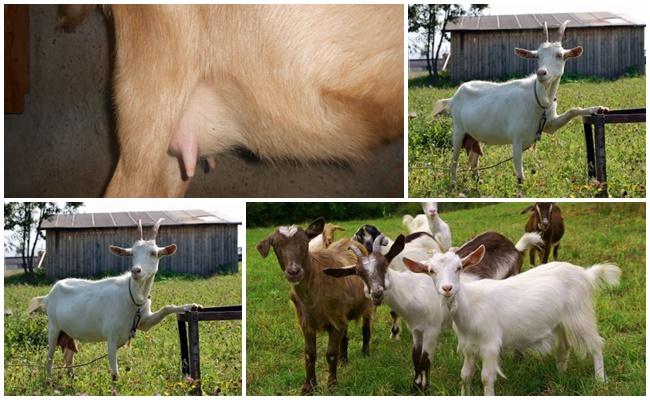
Imaginary
The form of the disease proceeds without bacterial infection and inflammation. The udder swells, the mammary glands become coarse. Milk is difficult to express. But latent mastitis differs from the other three forms in that there is no sediment and impurities in milk.
Diagnostic methods
How is catarrhal mastitis diagnosed?
- visually examine the udder - asymmetry and redness indicate an increase in glands and inflammation;
- measure the body temperature - the acute form is accompanied by its increase;
- palpate the affected areas - with swelling, enlarged lymph nodes and a restless reaction of the goat to touching the udder, a bacterial infection is suspected.
For laboratory research, milk is expressed, blood is taken. Based on the result of the analysis, the type of pathogen bacteria is identified and an antibiotic is prescribed, which will help in a particular case.
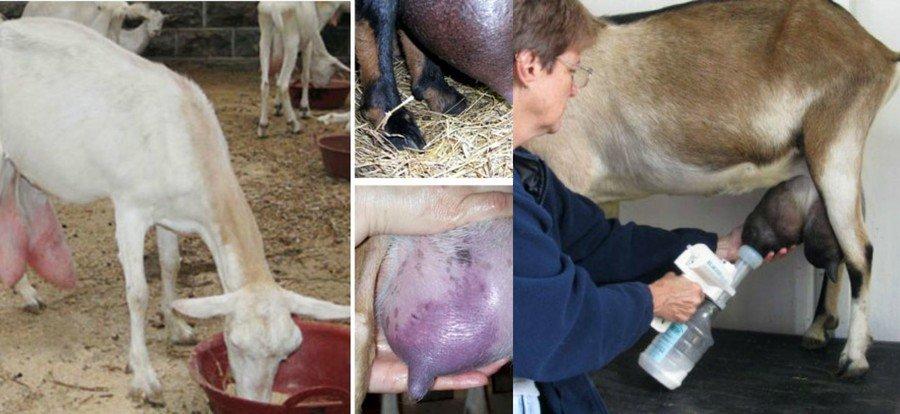
To determine mastitis without a veterinarian, you can use the liquid "Masttest-AF", which is sold in a veterinary pharmacy. How the research is conducted:
- a few drops of milk are taken into a sterile container from one part of the udder, and then from another;
- add the same amount of funds to milk and observe the color change.
The yellow-orange color of the sample means the absence of pathogenic organisms. The light green, dark blue color of milk means mastitis. The method is suitable for the diagnosis of the disease at the initial stage after lambing.
Mastitis treatment rules
During treatment, it is necessary to reduce the proportion of succulent feed in the diet in order to reduce milk production and the load on the udder. To combat mastitis, veterinary and traditional methods of treatment are used.
Medicines
Acute mastitis should be treated with antibacterial drugs. Medicines should be prescribed by a veterinarian based on the results of bacteriological analysis of milk.
The drugs used and an approximate treatment regimen are shown in the following table:
| Drug name | Description | Application scheme |
| Ceftriaxone | Broad-acting antibiotic in powder, sold in 1 gram glass vials. | Dilute the contents of one bottle in two milliliters of lidocaine and sodium chloride. Enter once a day. |
| "Doreen" | The veterinary drug includes the antibiotics doxycycline and rifampicin. Release form - powder. | Dilute 300 milligrams in water for injection, following the directions in the instructions for the preparation. Give an injection once a day at the same time. |
| "Kobaktan" | Cephalosporin antibiotic for intrauterine administration, suitable for the treatment of all forms of mastitis. | Administer 3-5 times with a break between injections at 12 hours. |
| "Nitox 2000" | Veterinary medicine with the active ingredient oxytetracycline, contains magnesium. Calculated by the weight of the animal. Adjuvant for the treatment of acute and subclinical mastitis. | Measure the dose at the rate of 1 milliliter per 10 kilograms of body weight and inject every 2-3 days. |
| "Multimast" | The complex preparation includes the antibiotics neomycin, tetracycline and penicillin. It is used to treat acute mastitis. Introduced into the udder after milking. | The dosage and frequency of administration is determined by the doctor. At the initial stage, a single application is sufficient. With progressive mastitis, 2-3 injections are required. |
| "Kloxamast" | Consists of cloxacillin and ampicillin. Indicated for the imaginary form of mastitis and for prophylaxis at startup. | It is entered once. |
In combination with antibiotics, special ointments will help cure mastitis:
- "Pikhtorin" - an antibacterial and anti-inflammatory agent intended for the treatment of damage to the skin of animals, contains turpentine, petroleum jelly, precipitated chalk and fir essential oil;
- Intrasan is a liniment for the treatment of all types of diseases.
Subclinical mastitis is treated with homeopathic remedies:
- "Mastometrin" - an ampoule drug against inflammation;
- "Travmatin" - injection solution, indicated for injuries of the udder.
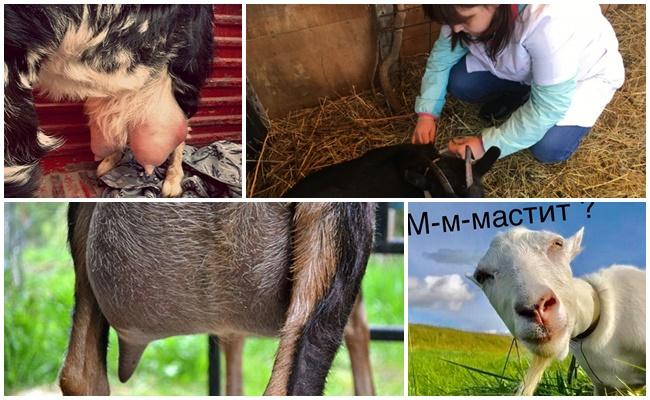
In addition to the main treatment, chlorophyllipt injections can be given. One milliliter of the herbal preparation is diluted in ten milliliters of a 25% solution of novocaine and injected into the nipple after milking. After 4 hours, the goat is milked again. Chlorophyllipt is injected twice a day for five days. Mastitis is easier to prevent than to cure. To permanently eliminate the risk of disease, it is necessary to introduce Mastiet Forte before starting the goats.
The drug is also used to treat subclinical and acute forms of mastitis, in combination with other drugs.
Folk methods and recipes
To cure a goat from mastitis, ointments from a home medicine cabinet will help:
- ichthyol - helps to cleanse wounds with a purulent form of the disease;
- liniment Vishnevsky - accelerates healing;
- baby cream - softens rough skin.
Instead of a cosmetic one, a homemade cream is prepared from goat fat and wax. For the treatment of mastitis at home, they resort to folk recipes.
Calendula will help relieve inflammation:
- mix flowers with petroleum jelly in a ratio of 1: 5;
- apply 3 times a day.
Dill has a diuretic effect and helps cleanse the blood. In ten liters of boiling water, 4 tablespoons of seeds are brewed. The goat should drink the entire volume during the day. The course of treatment is 7-12 days. Dill can be replaced with half-fallen grass or lingonberry leaves.
Experienced farmers with mastitis in goats are advised to adhere to the following rules:
- massage the udder lightly;
- after milking, smear clean nipples with cream.
The goat's udder should be washed with warm water, wiped dry, and then cream applied. Active massage is harmful during the treatment period, as bacteria from the focus spread throughout the udder. Cream-oiled nipple skin glides in hands. As a result, the tissue is pinched, torn, and the inflammation worsens.
Guidelines for caring for recovered goats
After illness, goats have reduced immunity, so animals need to be protected from drafts and provided with vitamin nutrition.
How to protect a recovered goat from mastitis recurrence:
- carry out general cleaning in the barn - change the bedding, ventilate, insulate the walls so that the animal is clean and warm;
- drink fresh clean water at room temperature - wash and refill drinkers every five hours;
- include more green feed and root crops in the diet - during the recovery period, give fresh hay, carrots, cabbage, pears and apples every day.
To restore immunity and water-salt balance, it is useful to give goats fortified feed and salt.
Prevention measures
The following measures will help reduce the risk of contracting mastitis:
- adherence to the milking technique - start and end with a massage, express milk with three fingers, empty the udder completely and wipe off the remaining milk;
- limiting the time of walking in winter, in damp weather - humidity and draft reduce the immunity of the animal;
- timely start before lambing - stop milking the goat 2 months before giving birth.
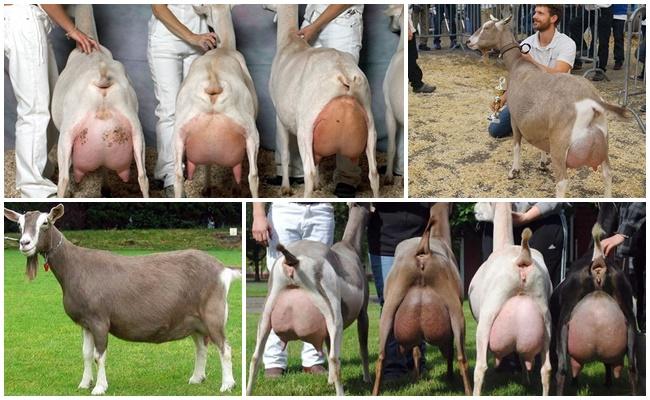
At the first sign or suspicion of mastitis, you should consult your veterinarian.
Can I drink milk from a sick goat?
During the period of treatment for mastitis, milk production decreases, and sometimes stops. It is possible to milk the goat again after the next birth. In order not to pour out the milk expressed during illness, goat breeders find use for it: they boil and give to animals to drink, add to cosmetics. The milk of a sick first-class goat is never given to the kids.
According to the recommendation of veterinarians, mastitis milk should not be eaten, as it contains the waste products of bacteria and causes poisoning in humans and animals.
Milk from a goat with mastitis is also not suitable for feeding. Young animals are lagging behind in development, suffer from indigestion and often catch infections due to low immunity.
